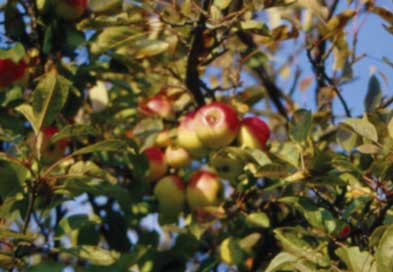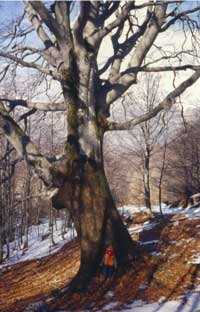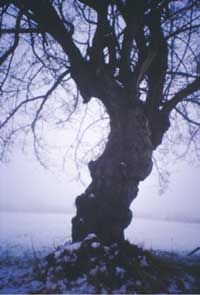Thanks to its environmental diversity and microclimates, Alpago has a considerable variety of species. The territory falls into two distinct parts: the Cansiglio plateau with its forest, vast in area but poor in species and particularly large trees, and the steep-sided natural amphitheatre of Alpago, with less tree coverage but greater variety.
To walk around Pian Rosada or Campon is to discover its trees and their stories and to imagine these old Silver Firs and Beeches in the forest our ancestors knew. The ancient Beech at Sant’Anna has somehow become home to the legend of the Madonna of Runal. However the most precious tree on Cansiglio must be the wild Pear (Pyrus pyraster, a typically Mediterranean species) in Valmenera, able to withstand one of the coldest climates in Italy for hundreds of years.
Over thirty different species of veteran trees have been identified in the bowl of Alpago and about a dozen significant areas of woodland. Some of these are exceptional: the Cornelian cherry (Cornus mas) at Torres which has no equal recorded in Italy, or the Beech (Fagus sylvatica) above Pian Formosa-Val Antander. In some cases bushes have become trees, like the Elder (Sambucus nigra) at Funes or the Hawthorn (Crataegus monogyna) at Coste near Farra or again the stately Alder (Alnus glutinosa) at Funes.
These trees are not only important for their size but also have historical significance. There is the strange case of the bicycle tree near Sitran, a Chestnut which, as it grew, incorporated a bicycle left on a branch and never recovered during World War II.
The trees recorded have been subdivided into various categories: ancient specimens, witness to the passing of time, old fruit trees and other trees worth mention and protection. The list of these trees can be consulted at the Museum where there is a well-stocked collection of wood specimens (cross sections of many species) which enables us to recognise different species just from their wood. A cross section of a Larch also shows us how to read the years of a tree from its rings, and admire those that are still standing.
The wealth and biodiversity of the tree population in Alpago is also demonstrated in the cultivated or fruit trees. Traditional knowledge, now being lost, kept alive old varieties of apples, pears, vines and cherries which are gradually disappearing. For instance the apple varieties “pon prussiani” in Valturcana and round Lavina and the “pon dell’acqua” at Chies and Codenzano or the wonderful “pon della rosetta” at Villanova near Farra; then there are the exceptional pear trees scattered all over which are prolific, like the “per spada” at Cesarine and the “per di S. Anna” near Spert and Benedet.
To know these trees is to understand the drama of the landscape where each tree plays its unique part in the scene and to understand the interplay between the natural and the man made world.


